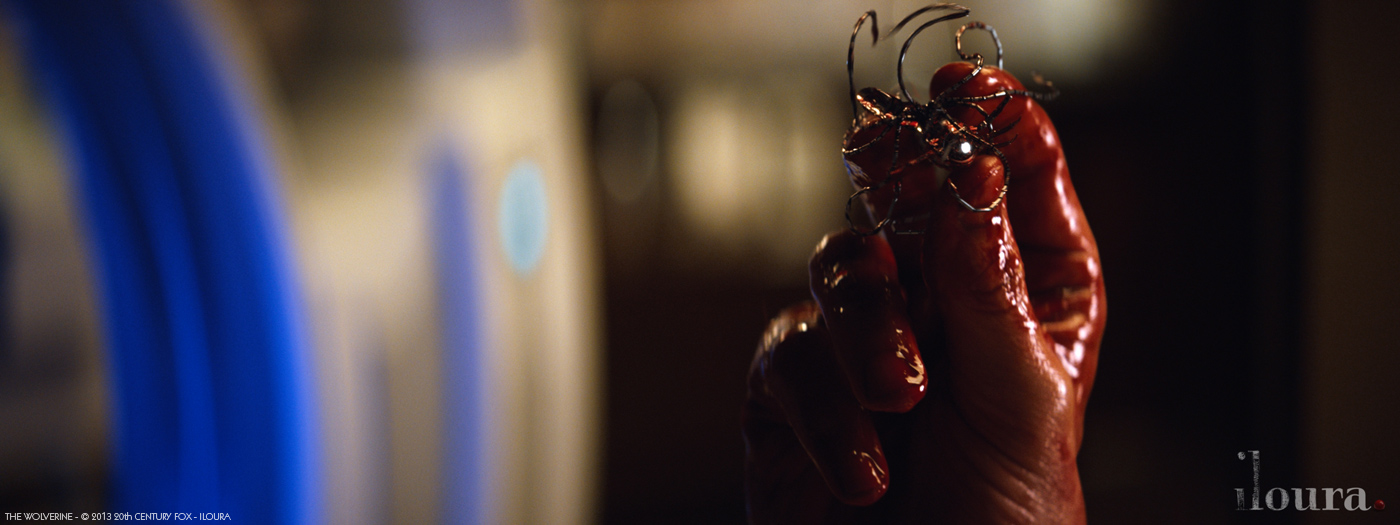Glenn Melenhorst spoke about the effects of Iloura for DON’T BE AFRAID OF THE DARK in 2010, then he worked on films such as PRIEST, TED or AFTER EARTH.
How did Iloura get involved on this show?
Iloura was introduced to the project at the earliest of stages bidding a number of sequences during the pre-production period. Sequences were awarded based on specific needs from the studio and VFX supervisory team.
How was the collaboration with Production VFX Supervisor Philip Brennan?
We started the creative process by discussing each scene via Skype. From that point we evolved a range of look development and concept art for the healing shots and for the pin bed sequence. Smaller shots, such as the shot where Wolverine pushes a piece of glass through his cheek, were more practically handled – we took the lead and discussed creative merits of the work once in progress.
Can you tell us more about the design and concept process for the Pin Bed?
Originally, the pin bed was to be mostly covered as a practical set piece but as things happen on a live set, the decision was made at the 11th hour to film a lot to the shots on the green screen prop. We had very good reference for the pin bed as the real bed was used in a handful of shots. What differed between the real and green screen bed was where the actor was positioned. Having no pins to reference to, he was slightly diagonal on the set piece and when our rigidly straight pins were added the lineup was quite untidy, with the actor cutting across lines of the pins. From that point on we, along with Phil Brennan art directed each shot down to the individual pin head and their reflections to make each shot work.
The Pin Bed is shown in the first seconds on this clip.
How was filmed this sequence?
The actor was supported by an arrangement of green draped poles that could move his limbs and head up as needed. We then had to match this motion with our pins and manipulate shadows and cloth deformations onto the actor to make it seem as though there was real contact between him and our pins.
Did you create procedural animations for the steel pins?
We rotomated the actor in each shot, tracing his actions with our digi double, then developed a system which drove the pins higher or lower based on their proximity to his position. As mentioned above, the needs of the director and the aesthetic of each shot made it necessary to begin that way but then hand animate each pin individually.
How did you handle the matchmove challenge?
We have some in-house tools for rotomation but the challenges of this production was often to rotomate actors convulsing and distorting with no tracking markers or information.
Can you tell us more about the Medical Beetle creation?
The beetle came to us a one piece of concept art which we developed and evolved into the creature that is on screen. We tried different legs and tentacles and colour schemes and internal workings until we had a pleasing result. The tendrils of the beetle were rigged to be animated as IK, Forward K and as a dynamic solve so it gave our animators the flexibility to get what they needed from the rig.
Can you explain more about your work on the Logan healing?
Our first challenge with this shot was the soft tracking of Wolverine himself. James Mangold’s preferred take of Wolverine standing up after the blast was a take without any tracking markers. As a consequence Iloura Artist’s Paul Buckley and Sam Jensen hand tracked freckles, clumps of hair and patches of skin, and painted scores of custom blend shapes to make our digital sculpt of the Wolverine stick. The process took the pair of them over a month to complete. After that process we made a start on the actual effect. Drew Wood Davies, our lighting lead on the feature, reverse engineered the lighting form the environment for us to relight our digi-double accurately.
How long have you worked on this film?
Around six months.
How many shots have you done?
Just over 100.
What was the size of your team?
Around 50.
What is your next project?
Iloura have just completed work on I, FRANKENSTEIN and the team are currently working on MAD MAX: FURY ROAD.
A big thanks for your time.
// WANT TO KNOW MORE?
– Iloura: Official website of Iloura.
© Vincent Frei – The Art of VFX – 2013





